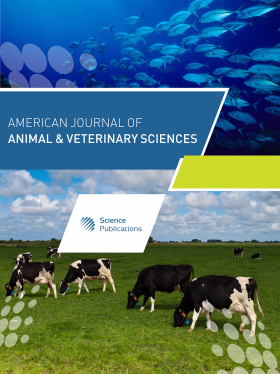Assessment of Phenotypic Plasticity in Dairy Production Traits of Toggenburg Goat Genotypes Across South African Agro-ecological Zones
- 1 School of Agricultural and Environmental Sciences, Department of Agricultural Economics and Animal Production, University of Limpopo, Limpopo, South Africa
Abstract
The study evaluated phenotypic plasticity (PP) in reproductive and milk production traits of Toggenburg (TOG) goat genotypes across five South African agro-ecological zones (AEZ) using a longitudinal observational design. Data from 2,417 does representing five genotypes (Founders, CP, Appendix A, Appendix B, and StudBook Proper) were sourced from the Milch Breeders Society of South Africa LOGIX database. Descriptive statistics and least square means of reproductive, milk production, and dairy value traits were computed using GLM in Minitab 18.1. Four methods were applied to estimate the Phenotypic Plasticity Index (PPI): reaction norm-based, regression-based infinite-dimensional model, character trait, and variance-based approaches, with model performance assessed using p-values and R² values. The variance-based method revealed high PP for lactation milk yield (s² = 394,324.2 kg²), somatic cell count (s² = 929,621.7 cells²/mL²), milk persistency (s² = 3,511.05), and lactation value index (s² = 11,760.20). Character trait analysis showed significant (P < 0.05) PP in somatic cell count, kid status score, litter size, and kidding ease score, particularly under humid and temperate conditions. Reaction norm models further confirmed significant PP in lactation milk yield, lactose, milk urea nitrogen, milk persistency, and lactation index, with R² values ranging from 27.11% to 99.64%. Regression-based infinite-dimensional models identified significant (P < 0.05) genotype-by-environment (GxE) interactions for dam longevity (1.0606 ± 0.2124), milk persistency (−2.481 ± 1.163), kidding ease score (−0.0423 ± 0.0209), and birth difficulty score (−0.0812 ± 0.0406). Conversely, age at first kidding and kidding interval exhibited non-significant PP (P > 0.05) across genotypes and AEZ, suggesting trait stability. Surface plots and phenotypic plasticity trends validated these findings. Overall, the study highlights substantial GxE interactions influencing Toggenburg goat adaptability, particularly with decreasing temperature and increasing humidity. Reaction norm and infinite-dimensional regression models were the most precise methods for quantifying PP. The findings underscore the value of integrating PP and GxE considerations into breeding programs to optimize productivity and resilience of Toggenburg goats under diverse environmental conditions.
DOI: https://doi.org/10.3844/ajavsp.2025.314.327

- 28 Views
- 6 Downloads
- 0 Citations
Download
Keywords
- StudBook Proper
- Dairy Value Traits
- Decreasing Temperature
- Increasing Humidity
- Reaction Norm
